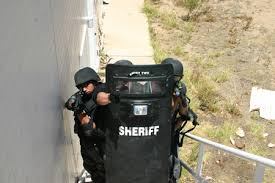
Introduction to SWAT
Special Weapons and Tactics (SWAT) teams have become an integral part of modern law enforcement in North America. Initially established in the 1960s to handle high-risk incidents, SWAT teams are specially trained units equipped to deal with critical situations that normal police officers are not sufficiently prepared for. Their main objectives include hostage rescue, counter-terrorism, and managing armed confrontations. Given the rise in violent crime and complex threats, understanding the role of SWAT teams has never been more relevant.
The Evolution of SWAT Teams
The concept of SWAT originated in Los Angeles, California, in 1965, initiated by the need to respond effectively to rising crime rates and the growing complexity of threats. The development of tactical units spread rapidly across the United States and eventually Canada, with many police departments establishing their own teams. Today, SWAT teams employ advanced technology and weaponry including armored vehicles, drones, and night vision equipment to enhance their operational capabilities.
Recent SWAT Operations
Recent events have brought SWAT teams back into the spotlight. Following a series of high-profile incidents involving mass shootings and hostage situations, such as the tragic events at the Texas school shooting in May 2022, SWAT teams have been critical in ensuring public safety. Each deployment is preceded by thorough planning, intelligence gathering, and execution of tactical objectives, emphasizing life-saving strategies over confrontation whenever possible.
Public Perception and Challenges
While SWAT teams are hailed for their effectiveness in crisis situations, they are not without controversy. Critics argue that the militarization of police forces can lead to excessive use of force and heightened social tensions, particularly in minority communities. Law enforcement agencies are increasingly aware of these concerns and are working towards better community relations, transparency in operations, and implementation of de-escalation tactics.
Conclusion and Future Implications
The role of SWAT teams is undeniably critical within the framework of public safety and law enforcement. As threats continue to evolve, SWAT teams will need to adapt their strategies and training to meet new challenges. The growing conversation around police reform and community engagement will also shape the future of SWAT operations, demanding a balance between preparedness and accountability. For citizens, understanding the dual roles of SWAT teams as both protectors and enforcers is crucial in fostering informed dialogue about public safety and community relations.




